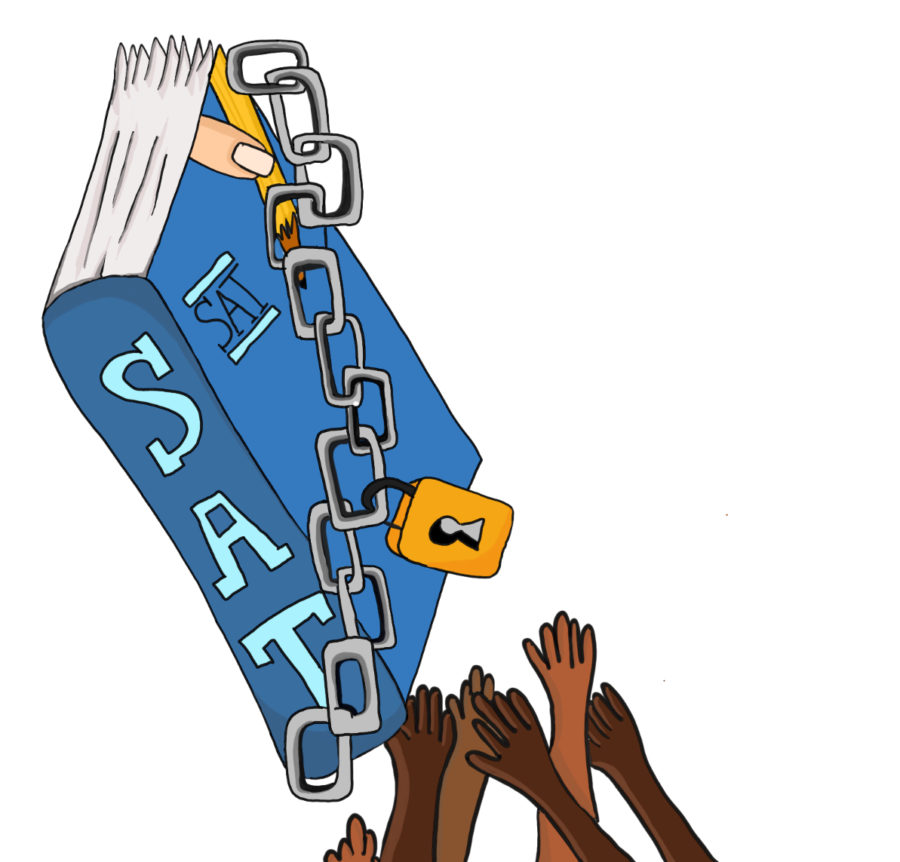Opinion | College Board is rooted in racism and discrimination
While some students go into high school wondering if their experience will look like “Mean Girls” or “10 Things I Hate About You,” covered in glitter and a pop-punk soundtrack, other students are forced to worry about whether or not they’ll leave their four years feeling adequately prepared for the future. They wonder whether or not their most basic needs will be met, and whether or not the system they are relying on for their education is working against them from the most structural level. Many of the attributes of a successful college application, such as rigorous AP courses and high standardized test scores—accolades almost all students face immense pressure to receive—are much harder to attain for students of color. The numerous opportunities and privileges afforded to white students, both historically and presently, paves a much clearer way to an AP classroom and beyond, and the discrepancies between this idyllic experience and the reality of many Black students have seen little change. Considering the extent to which the education system was designed to exclude Black students, complacency and band-aid solutions are immensely inadequate.
One of the largest reinforcements of the structural oppression of Black students in the education system is standardized testing. The SAT was created in the early 20th century as a method of excluding Black Americans from academic spaces. As immigration picked up in the U.S., white parents were uncomfortable with people of color “infiltrating” white schools. Prominent psychologist and eugenicist, Carl Brigham, echoed these sentiments and created a highly-biased standardized test to administer to people of all races and backgrounds. He used his results as a way to justify the oppression of Black Americans and immigrants, writing that black Americans were not intellectually competent and that this testing had proven the superiority of “the Nordic race.” Furthermore, he fear-mongered white parents into believing that if they were to welcome immigrants and Black Americans into academia, the education system would be ruined. Thus, standardized tests such as the SAT were structured into almost every school nationwide.
Obviously, the test Brigham devised was blind to the cultural and linguistic discrepancies between a native-born American and an immigrant, as well as the structural oppression of people of color in America that limited their access to quality education predating the test—and the SAT has remained so ever since. An investigation of the Educational Testing Service found that, as recently as the 90’s, agencies in charge of pre-testing SAT questions collected data about which questions white students were more likely to get right. Such questions were the only ones ever put on the final version of the test.
In addition, there are many class barriers put on standardized tests that disproportionately affect students of color. Parents spend, on average, $45 through $100 per hour for test prep courses, a benefit that can only be afforded to so many, and which has immense benefits on test day. Things like these directly make doing well on the SAT an exclusive privilege.
This problem doesn’t end with the SAT. There is no denying the challenge that comes with taking an AP class; the coursework, rigor, and level of commitment required is a hard burden for any student to bear. However, a nuance many overlook is who is in those classes. This is a problem many students don’t ever seem to notice, because, well, they don’t have to. That is, of course, if you are white.
It is an undeniable fact that the amount of people of color in Advanced Placement classes is not nearly proportional to the amount of people of color at ETHS. Yet, this segregation of knowledge is a national problem that comes from centuries of systemic racism.
Throughout history, enslaved people were not allowed to read or write becuase this would give them too much power in the eyes of slave owners. Many immigrants to the U.S. were ostracized for not speaking the languages, and their education suffered due to that. During the Jim Crow Era, Black students were separated from their white peers, and their schools received less funding, resources, and worse learning. Ultimately, learning has always been treated as a privilege for the white and the wealthy, when it is a right, and AP classes are no different.
The lack of people of color in these advanced spaces can be discouraging to other students of color for many reasons—first being imposter syndrome. When you are one of three people of color in a class of 25, you get the feeling that you don’t belong. There seems to be an unspoken notion that being smart, hardworking, and intellectual are “white traits”.
Kyla Wellington, an African American senior at ETHS explains the implications that the College Board has had on people of color.
“The AP system has made such a strong impression on POC that it isn’t a space where they are expected to do as well as white students,” Wellington says.
Having people that look like you and share many experiences with you contributes to your learning environment. In addition, the opinions being shared in these classrooms are not separate from the identities of those who are sharing them. Debating topics like slavery, segregation, immigration polices when there are not people who feel the effects of these events on a daily basis, or have family who were effected by these events can leave students feel misunderstood. Not being surrounded by people with similar backgrounds can be ostracizing, and discouraging.
“I’ve always felt like I’ve had to work twice as hard (as a woman of color) to be treated with the same respect in AP spaces,” Senior Brooke Banks notes.
We know knowledge is power, so keeping people out of advanced learning spaces leaves them powerless. While there is no simple solution to these prejudices, the first step is to acknowledge them. These issues have been consistently swept under the rug and gone unnoticed. Education is a right that everyone deserves to have equal access to. Advanced classes should be an inclusive environment where people can be surrounded by others who can support and relate to them. Testing should evaluate students’ ability to learn and retain knowledge rather than their race or class. Learning needs to be accessible to everyone, otherwise this vicious cycle of systemic injustice continues. High school should equally prepare all of us for adulthood, and not just the ones who already have a leg up. Racial justice starts inside ETHS classrooms, with equal knowledge and opportunities for all. As Supreme Court Justice Sonya Sotomayor said, “Until we reach equality in education, we can’t reach it in society”.
Your donation will support the student journalists of the Evanstonian. We are planning a big trip to the Journalism Educators Association conference in Nashville in November 2025, and any support will go towards making that trip a reality. Contributions will appear as a charge from SNOSite. Donations are NOT tax-deductible.





